Interplaying factors that effect multiple sclerosis causation and sustenance
- PMID: 22462023
- PMCID: PMC3302019
- DOI: 10.5402/2012/851541
Interplaying factors that effect multiple sclerosis causation and sustenance
Abstract
The author hypothesized that multiple sclerosis (MS) is a humoral autoimmune disease, caused by faulty interplay between myelin-specific, dimeric IgE, specifically competing non-IgE antibodies and IgE-triggered degranulating mast cells. The principal fault was believed to be insufficient quantity of protective, specific non-IgE antibodies. Also conjectured was the possibility of an unexpected and adverse immune suppression caused by none-MS pharmaceuticals being consumed by patients for their MS or for other conditions. To test both hypotheses, a mimotopic, peptide antigen-based, serum immunoassay was developed to measure dimer-bound IgE excess among MS patients, wherein the IgE specifically complexes with two or more myelin surface epitopes at an interval of 40-100 Angstroms, a separation critical for mast cell degranulation and cell damaging effect. MS test sensitivity and specificity, when analyzing five previously untreated patients for dimeric IgE presence, was 100%. In direct comparison, twenty age- and gender-matched female and male control subjects were test negative. Analysis of 35 multiple sclerosis patients, who were concomitantly being treated with potentially immunosuppressive pharmaceuticals, appeared to show the substances' negative effect upon MS causation, progression, or specific immunoassay performance. Therefore, MS is likely an autoimmune disease caused by IgE-mediated mast cell degranulation possibly in conjunction with immunosuppressive agents.
Figures



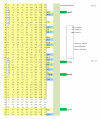
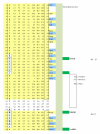
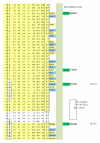
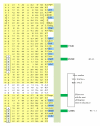
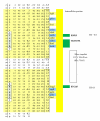
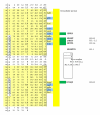
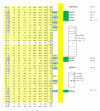
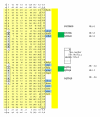
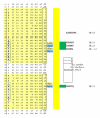
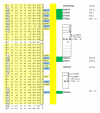
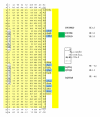

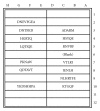







Similar articles
-
Mimotopic peptide immunotherapy for the treatment of multiple sclerosis, an inflammatory autoimmune disease.Am J Clin Exp Immunol. 2013 Oct 16;2(3):208-21. eCollection 2013. Am J Clin Exp Immunol. 2013. PMID: 24179729 Free PMC article.
-
Serum IgE reactive against small myelin protein-derived peptides is increased in multiple sclerosis patients.J Neuroimmunol. 2006 Nov;180(1-2):40-9. doi: 10.1016/j.jneuroim.2006.06.030. Epub 2006 Sep 20. J Neuroimmunol. 2006. PMID: 16996143
-
IgG-mediated down-regulation of IgE bound to mast cells: a potential novel mechanism of allergen-specific desensitization.Allergy. 2014 Mar;69(3):338-47. doi: 10.1111/all.12327. Epub 2013 Dec 19. Allergy. 2014. PMID: 24354793
-
Beyond IgE: Alternative Mast Cell Activation Across Different Disease States.Int J Mol Sci. 2020 Feb 22;21(4):1498. doi: 10.3390/ijms21041498. Int J Mol Sci. 2020. PMID: 32098318 Free PMC article. Review.
-
Mitoxantrone: a review of its use in multiple sclerosis.CNS Drugs. 2004;18(6):379-96. doi: 10.2165/00023210-200418060-00010. CNS Drugs. 2004. PMID: 15089110 Review.
Cited by
-
Peptides and peptidomimetics as immunomodulators.Immunotherapy. 2014;6(6):755-74. doi: 10.2217/imt.14.37. Immunotherapy. 2014. PMID: 25186605 Free PMC article. Review.
-
Bickerstaff's brainstem encephalitis, Miller Fisher syndrome and Guillain-Barré syndrome overlap in an asthma patient with negative anti-ganglioside antibodies.BMC Res Notes. 2012 Jun 14;5:295. doi: 10.1186/1756-0500-5-295. BMC Res Notes. 2012. PMID: 22698187 Free PMC article.
-
Mimotopic peptide immunotherapy for the treatment of multiple sclerosis, an inflammatory autoimmune disease.Am J Clin Exp Immunol. 2013 Oct 16;2(3):208-21. eCollection 2013. Am J Clin Exp Immunol. 2013. PMID: 24179729 Free PMC article.
-
Fish and egg specific immunoglobin e in multiple sclerosis patients.Int J Prev Med. 2013 May;4(Suppl 2):S185-8. Int J Prev Med. 2013. PMID: 23776721 Free PMC article.
-
Database-Driven Identification of Structurally Similar Protein-Protein Interfaces.J Chem Inf Model. 2024 Apr 22;64(8):3332-3349. doi: 10.1021/acs.jcim.3c01462. Epub 2024 Mar 12. J Chem Inf Model. 2024. PMID: 38470439 Free PMC article.
References
-
- Göpel W, Benkenstein H, Banzhaf M. Immunosuppressive therapy of multiple sclerosis using cyclophosphamide and imuran. Report on 57 cases. Deutsche Gesundheitswesen . 1972;27(41):1955–1961. . - PubMed
-
- Jacobs L, O’Malley J, Freeman A, Ekes R. Intrathecal interferon reduces exacerbations of multiple sclerosis. Science . 1981;214(4524):1026–1028. . - PubMed
-
- Berger JR. Functional improvement and symptom management in multiple sclerosis: clinical efficacy of current therapies. American Journal of Managed Care . 2011;17(supplement 5):S146–S153. . - PubMed
-
- Mikol DD, Ditlow C, Usatin D, et al. Serum IgE reactive against small myelin protein-derived peptides is increased in multiple sclerosis patients. Journal of Neuroimmunology . 2006;180(1-2):40–49. . - PubMed
LinkOut - more resources
Full Text Sources
